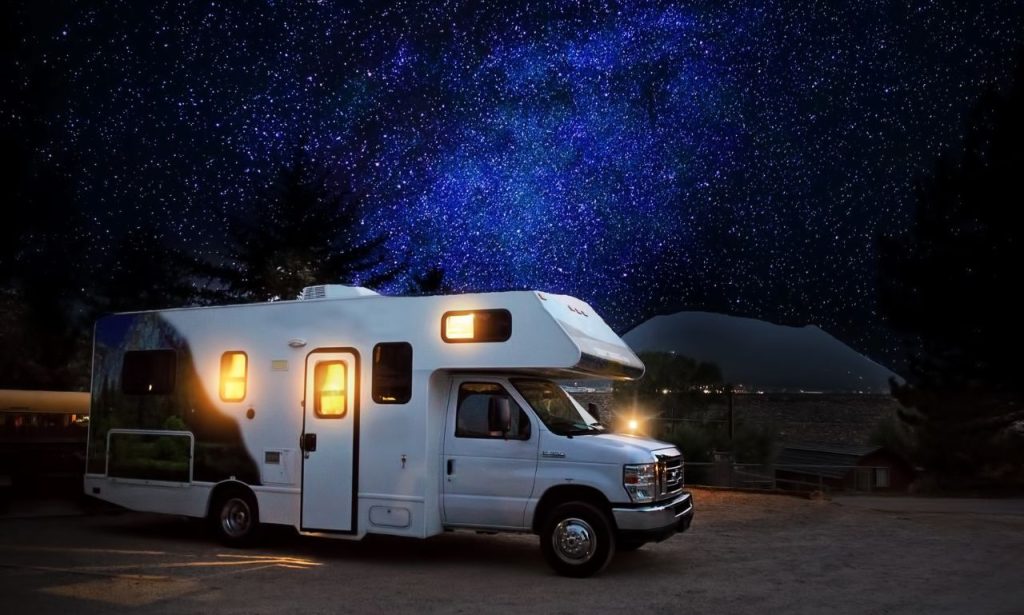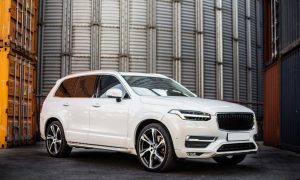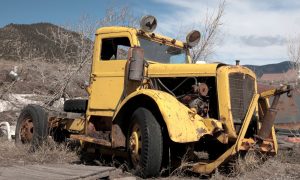Not all dream campers start shiny and new off a dealership lot. Some are hiding in plain sight—at insurance auctions, salvage yards, or sitting unused with a salvage title. Understanding how to convert salvage trucks into campers isn’t just about saving money; it’s about building something truly custom. Whether you’re chasing sunsets in a rebuilt title pickup truck or building a cozy rig from a surplus military vehicle, this guide is your blueprint.
Select the Right Salvage Truck
It all starts with the right bones. Not every crashed or flooded truck is a lost cause, but choosing poorly could drain your wallet faster than you can say “salvage auction.” Aim for wrecked trucks with cosmetic issues rather than structural or engine damage. Trucks sold after theft recovery or with hail damage often present the best starting point—they’re usually mechanically sound but deemed a total loss by insurance companies.
Pickup trucks, heavy-duty moving vans, and surplus army trucks are standard donor vehicles for camper conversions. Look for trucks with a strong frame, high payload capacity, and minimal rust. You’ll find listings on truck salvage websites, insurance sales, or dedicated auction houses like Copart and IAAI. Don’t rush it. The right truck will set the tone for the entire project.
Understanding Salvage Titles

The term “salvage title” might spook some, but it shouldn’t if you do your homework. A salvage title simply means the vehicle has been declared a total loss by an insurance company. This could stem from fire damage, flood exposure, collision damage, or even cosmetic problems like hail or roof leaks.
Once repairs are completed and the truck passes specific state inspections, it can be issued a “rebuilt title” or “reconstructed motor vehicle” classification. At that point, it’s legal to drive in most states. However, regulations vary wildly. Some states—like Montana—offer more flexible registration options. Always research your state’s DMV requirements and understand terms like Missouri Junking Certificate, VC §243, and Chapter 16 compliance.
If your dream is a Salvage Title RV, you’ll need to cross your t’s legally. Otherwise, you could end up with a beautiful camper that’s permanently parked.
Planning Your Conversion
Before picking up a wrench or sketching blueprints, ask yourself: How do you plan to use the camper? Weekend road trips? Full-time off-grid living? Mobile command center for remote work? Your use case determines every build decision from here on out.
Start with the layout. Think like an interior designer and an engineer rolled into one. Are you going with a camper shell, a fully insulated box build, or a gutted moving truck interior? Will it feature a full pillow-top mattress or foldable bunks? Sketch everything, then build a materials list. Items like insulfoam R-TECH insulation, a Coleman EvenTemp 3-Burner Stove, a Thetford Curve Porta Potti, and a gray water tank are often used in DIY builds.
This isn’t HGTV—it’s real-world planning. Be brutally realistic about weight distribution, electrical work, and available square footage. And please, measure twice. Regret is expensive.
Starting the Build Process
Now comes the part that separates dreamers from doers. Begin by stripping the interior of your salvage truck. Remove everything down to the metal frame—seats, carpet, ceiling panels, old wiring—everything goes. This bare-bones shell is your canvas.
Next, address rust and leaks. Many salvage vehicles suffer from roof leaks, flood damage, or interior smoke issues. Use this opportunity to reseal, repaint, and restore structural integrity. The better your prep work, the longer your conversion will last.
Start framing the interior using lightweight wood or aluminum studs. You’ll build out walls, electrical conduits, and any loft areas. Use waterproof materials and flame-retardant finishes when possible. Think ahead about wiring paths for 12-volt converters, solar setups, lighting, and fans.
Safety and durability are the name of the game at this stage. It’s not glamorous, but it’s foundational.
Interior Design and Construction
With the framework in place, the fun begins. This is where you transform a junked truck into something resembling home.
Install insulation first. Insulfoam R-TECH panels are lightweight and practical. Follow that with wall coverings—wood paneling is a classic for that warm, rustic cabin feel. Flooring comes next. Many choose black carpet for a sleek look, or vinyl plank for easy cleaning.
Your bed, kitchen, and bathroom setup must fit snugly and logically. Mount your Coleman stove securely. Install a small sink with a hand pump or 12V faucet. Grey water tanks should be easy to empty. Mount your Porta Potti with a latch to prevent movement.
Storage should be everywhere—under beds, in ceilings, inside walls. Build smarter, not bigger. Consider foldable furniture and ceiling racks to maximize usable space. Don’t forget the Tailgate screen door for bug-free breezes.
This isn’t a luxury home—it’s a smartly designed survival pod with charm.
Finishing Touches and Personalization
A camper isn’t truly yours until it’s dripping in personality. This is your mobile home, not a corporate RV.
Paint the walls a bold color. Mount a Blu-ray player for movie nights. Add string lights, blackout curtains, or even a mini herb garden. Hang art, photos, or souvenirs from past trips.
Install mobile internet options if you’re planning to work remotely. Starlink, LTE hotspots, or campground Wi-Fi setups vary in complexity, but connectivity is key in the gig economy. Add a sound system, mount a foldaway table, and finish with a high-density foam mattress or a full pillow top for comfort.
Every inch should scream: “This is mine.” Because it is.
Customize for Comfort and Functionality
Comfort doesn’t mean compromise. Clever design lets you live well even when space is tight.
Start with climate control. Use vent fans, insulation, and reflectix to regulate temperature. Consider a diesel heater for winter or a rooftop AC unit for summer.
Next is lighting. Use LED strips or puck lights. These sip power and add ambiance. Multiple light zones with dimmers make a huge difference in mood and visibility.
Water is life. Use 5-gallon jugs for fresh water, and a gray water tank beneath the sink for waste. Upgrade with a foot pump or 12V pump. Mount hooks, cubbies, and fold-down tables to multiply function in tight quarters. Don’t forget ventilation. It’s the unsung hero of any camper conversion.
Exploring Military Surplus Options
Ever seen a Stewart & Stevenson 6×6 FMTV up close? Or the iconic M35 truck? These surplus army trucks are beasts—and yes, they can be converted into monster campers.
The appeal? Durability. These rigs were built for warzones. They chew up rocky terrain and spit out comfort on the other side. Many people buy them from surplus auctions and repurpose them into expedition vehicles with camper boxes or custom travel setups.
Think of them as rolling bunkers, ideal for off-grid living, remote travel, or just intimidating your HOA. You’ll need a heavy-duty bus license in some states, and fuel mileage is… not great. But they’re unmatched in power and presence.
If you’re serious about the rugged life, this might be your dream platform.
Advantages of Using FMTV/LMTVs
Stewart & Stevenson FMTVs and LMTVs are over-engineered for civilian life, and that’s their secret sauce.
You’ll get a high payload, massive tires, all-wheel drive, and a near-bulletproof drivetrain. These trucks can handle deep snow, rocky trails, flash floods—you name it. That means fewer limits on where you can camp, explore, or live.
Their size also gives you serious interior space. The build includes a full-size bed, shower, kitchen, and workspace. Install solar panels, battery banks, and still have room to dance. The military didn’t care about comfort, but the conversion community sure does.
Just be ready for curious questions, gawking kids, and highway patrol officers asking, “Is that even street legal?”
Legal and Compliance Considerations

Let’s talk paperwork. Building a killer camper is pointless if you can’t legally drive it.
Start with title verification. You’ll likely need a “Verification of Vehicle” form, sometimes under a state-specific label like Miscellaneous Certifications or VC §243. Requirements differ, but most states require safety inspections, emissions testing, and photos documenting your conversion.
Watch out for weight class issues. Some campers may fall under commercial vehicle registration, especially with heavy trucks. Others may qualify as a Privately-Owned School Bus or custom travel trailer, depending on modifications.
Be honest, meticulous, and follow Chapter 16 rules in your jurisdiction. Nobody wants a late-night knock from law enforcement questioning your mobile HQ.
Making Surplus Vehicles Street Legal
This is the bureaucratic Everest of camper conversions. Surplus trucks, especially military ones, require extra legwork.
Start with a clean bill of sale and any surplus documentation. You may need to pass a DOT inspection, add modern safety gear like blinkers and brake lights, and replace old tires with road-rated ones. Expect hurdles with insurance—many companies balk at insuring rebuilt title trucks or surplus vehicles.
Montana LLC registration is popular in online forums because it offers flexibility with titling oddball vehicles. Some owners also title through states like South Dakota or Vermont. Just be sure your local laws allow out-of-state titling without permanent residency.
When in doubt, visit your local DMV and ask direct questions. It’s better than assuming and getting burned later.
Conclusion
Knowing how to convert salvage trucks into campers is a blend of art, grit, and a whole lot of patience. From choosing the right salvage yard gem to passing inspections and wiring the lights, the process is challenging but wildly rewarding.
You’ll face setbacks. That’s part of it. But in the end, you’ll have a one-of-a-kind camper, built by hand, with character you simply can’t buy.
FAQs
Yes, but only after it’s been repaired and passes state-mandated inspections. It will then receive a rebuilt or reconstructed title.
Look for mechanically sound pickup trucks or moving vans with cosmetic damage. Surplus army trucks are also a solid option if you’re ready for a bigger build.
Depending on your choices, expect to spend anywhere from $5,000 to $30,000. Military truck conversions can run higher due to size and components.
Most states allow it, but regulations differ. Some conversions benefit from Montana or Vermont registration for flexibility.
Possibly. Vehicles like the Stewart & Stevenson 6×6 FMTV may require a commercial license in some states.




